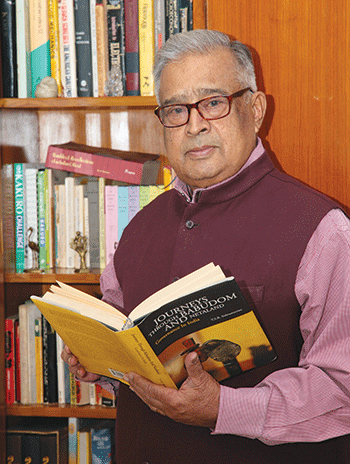 When the US-based PEW Foundation after a recent field survey, confirmed the enormous countrywide popularity of prime minister Narendra Modi in India, and widespread expectation that he would transform the country, the report struck a chord among the majority of Indians. But when a few months earlier, after an international study the very same foundation came to the dismal conclusion that Indian school education standards are the “worst” worldwide, none in India took notice — neither our educated citizens, the so-called intelligentsia, nor the blaring media, and certainly not the Central and state governments. The report was contemptuously dismissed as typical of foreign agencies inimical to India. Tragically, there’s no desire in government, academia or society to introspect or investigate what needs to be done.
When the US-based PEW Foundation after a recent field survey, confirmed the enormous countrywide popularity of prime minister Narendra Modi in India, and widespread expectation that he would transform the country, the report struck a chord among the majority of Indians. But when a few months earlier, after an international study the very same foundation came to the dismal conclusion that Indian school education standards are the “worst” worldwide, none in India took notice — neither our educated citizens, the so-called intelligentsia, nor the blaring media, and certainly not the Central and state governments. The report was contemptuously dismissed as typical of foreign agencies inimical to India. Tragically, there’s no desire in government, academia or society to introspect or investigate what needs to be done.
Any correlation between educational standards and national development will unmistakably highlight the critical role played by the quality of the education system in determining the international standing of countries. It’s no coincidence that the Top 30-40 countries of the world, in terms of per capita income, human development advances and other measures of the status of the citizen, boast high standards of education. Anybody who does not see this connection knows nothing about development. Education is both the cause and the effect of development and progress. Today, after 70 years of practicing ‘democracy’, India is in the bottom 5 percentile globally of every parameter of human development — education, nutrition, hunger, gender equality, child welfare. The situation is alarming, and bodes ill for the future.
Despite boasting the best minds of the world in the government at the Centre, why is such an elementary point being consistently missed by every political party in power? Because there are no ‘votes’ in the field of education — this is a harsh fact. No government is willing to bear the short-term political cost — the risk of taking on vested local interests in school education is enormous, and the huge black money mountain in higher education is largely controlled by politicians. A pessimistic, helpless majority is resigned to its fate. Governments at the Centre or in the states don’t experience any pressing need to give a chance to children.
Moreover, why is our intelligentsia quiet? With much of the media preoccupied with exacerbating religious, caste, community differences, it’s hardly surprising that there is no sustained intellectual discourse on subjects relating to public health, education, hunger, small scale enterprises, etc. Clearly, our intelligentsia believes these issues are unworthy of serious consideration, and are conveniently outsourced to an inept, insensitive and unconcerned government.
Nor is the middle class exhibiting alarm or anger at the current state of affairs in Indian education. Partly, this is out of ignorance of the harsh realities of the education system. With media reports constantly focusing on Indians performing well in Silicon Valley, in Harvard and Stanford universities, the popular belief is that success or failure is that of children rather than the system. This popular belief is unwarranted because conditions have not been created to give reasonable opportunities to the great majority of India’s children to learn. The average parent has no time to engage with education problems of his child and the preferred solution is to engage a tutor! Credible studies have clearly established that Indian children are as good as any in the world in learning potential, and that children in the remotest most-backward villages of every state, have the capability to compete with the best.
The failure is fundamental and singular — as a nation we have not given the opportunity for children to learn. We have condemned future generations to a bleak future. The best-selling French economist Thomas Piketty has recently highlighted abysmally unequal income distribution in India which is not conducive to medium/long-term stability. Is it not anomalous that some private schools that charge tuition fees of Rs.2 lakh per annum attract 200 admission applications per seat while free-of-charge government schools have no takers? Can there be a more severe indictment of the pitiful condition of our public/government schools?
Admittedly, the incumbent Central government has made major advances in economic reform. But in the final analysis, over the long term, an economy can only be a reflection of the quality of its citizens. Is the Central government unaware that the departments monitoring human development indices see no need for reforms? Indeed, if they were shut down tomorrow it would not really matter and nobody would notice. Moreover, are the Central and state governments morally justified in pointing fingers at private schools after decades of neglect of the country’s 1.30 million public/government schools from which there is a steady exodus to private primary-secondaries? With today’s IT and AI (artificial intelligence) technologies, dramatic changes can be made in India’s K-12 education system within the next ten years. This issue needs the most immediate attention in the era of digital/broadband/4G India. Time is not on our side.
(T.S.R. Subramanian is a former Union Cabinet secretary and chairman of the Committee for Evolution of the New Policy on Education 2016)